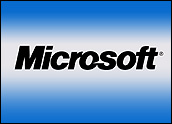
Yahoo announced a change in its targeted advertising privacy policy Friday. Beginning in late August, users will be able to opt out of customized advertising on the company’s main page. The move is an expansion of the Internet portal’s opt-out program for targeted ads provided by Yahoo on third-party networks.
The announcement was part of Yahoo’s response to a letter from the House Energy and Commerce Committee. The Congressional committee sent letters on Aug. 1 to 34 Internet service providers and leading online companies as part of its inquiry into the structure of the companies’ customized advertising privacy policies.
“We hear from some users who really appreciate the benefits of relevant advertising and some who prefer not to receive this type of marketing — so we decided to offer transparency and choice about the options that are available to all users,” Anne Toth, head of privacy and vice president for policy at Yahoo, told TechNewsWorld.
Privacy Police
Trust, Toth said, is Yahoo’s “greatest asset, so we strive to create the most trusted, compelling experience online.”
Yahoo had been planning to launch the new privacy capability at the end of August, according to Toth.
“We moved up the announcement date in order to let Congress know about the options available to consumers,” she explained.
Should a large portion of Yahoo’s users decide to opt out of the engine’s targeted advertising, it could threaten Yahoo’s value to advertisers. However, it will be hard to predict exactly how many Yahoo users will opt out of customized advertising, and the company remains “confident that consumers are responding to the customization of online content and they would prefer relevant advertising that saves them time and money,” Toth said.
“We believe that consumers are seeking online networks that offer that customization within a relationship of trust. In that sense, we believe that we create more business value by offering transparency and choice in our advertising,” she added.
Who Else Is in?
The company’s only gauge for consumers’ interest in opting out is its current opt-out page. The Web page registered 75,000 page views in July. That number is not, however, an exact indication of the number of users opting out, Toth noted; it’s simply the number of views that page received. “This is a small fraction of a percent of our total user base,” she added.
While it is hard to say how many users will opt out of Yahoo’s targeted advertising, statistics from an IDC online consumer survey indicate that 41 percent of those online aged 13 and older said they would allow Web sites to collect personal information about them in return for ads that better fit their purchase intents.
Of that number, more than half said they were comfortable sharing their personal information if Web sites give them the option to opt out, said Caroline Dangson, an analyst IDC.
“Our survey illustrates that U.S. online consumers want choice and control when it comes to personal information that is collected about them. By giving users the option to choose, IDC believes the site will build greater trust with users and that the majority will not opt-out of these services if they trust the site,” she told TechNewsWorld.
In expanding its opt-out privacy policy to include customized ads, Yahoo has put rival companies such as Microsoft and Google on the spot, Dangson said.
“Yahoo is taking the high road here to build trust, realizing that, so far, most of its users have not actually gone through the steps of opting out of targeted advertising. By making the first move, Yahoo is putting pressure on Google and MSN to offer the same to their users,” she pointed out.
























































Social Media
See all Social Media